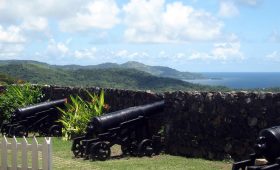Lake Titicaca: Exploring the Andean Marvel
Getting There
Lake Titicaca straddles the border between Peru and Bolivia, with approximately 60% of its area in Peru and 40% in Bolivia. If you’re starting from La Paz, Bolivia, a bus ride will take you to the lake in about five hours. Alternatively, you can fly into Juliaca, Peru, and then travel by bus or taxi to the lake. For those in Cusco, Peru, a scenic eight-hour bus ride or a ten-hour train journey to Puno is available. Whichever route you choose, the journey offers stunning views of the Andean landscape.
Local Transportation
Once at Lake Titicaca, boats are the primary mode of transportation for exploring its islands and villages. Numerous tour operators offer guided tours, but you can also hire a private boat for a more tailored experience. Boats typically come with comfortable seating and knowledgeable guides who provide insights into the local culture and history. Remember to bring a camera to capture the breathtaking scenery.
Exploring the Islands
Isla del Sol
Isla del Sol, or the “Island of the Sun,” is a significant cultural site believed to be the birthplace of the Inca civilization. Walk along its ancient stone pathways and visit sacred temples and archaeological sites. The island offers panoramic views, especially at sunset, when the sun dips below the horizon, casting a golden glow over the lake.
Isla de la Luna
Nearby Isla de la Luna, or the “Island of the Moon,” provides a quieter experience. Explore the ruins of the Temple of the Virgins and soak in the tranquil atmosphere. The island’s serene environment makes it an ideal spot for relaxation and reflection.
Unique Cultural Experiences
Lake Titicaca is home to the Uros people, who live on floating islands made entirely of reeds. A boat tour to these islands offers a glimpse into their traditional way of life. For a deeper cultural immersion, consider staying overnight with a local family. Additionally, the region is rich in pre-Hispanic history, with Puno continuing its agricultural traditions and ancestral rituals, including offerings to Pachamama (Mother Earth).
Best Time to Visit
The dry season, from May to October, is the best time to visit Lake Titicaca. Expect sunny days and clear skies, ideal for outdoor activities and island exploration. However, temperatures can drop at night, so pack warm clothing. To avoid crowds, consider visiting in April or November, when the weather remains pleasant but tourist numbers are lower.
Practical Tips
- Lake Titicaca is the largest lake in South America, covering about 8,300 square kilometers.
- Due to its high elevation, travelers may experience altitude-related headaches. Coca tea is a local remedy that may help alleviate symptoms.
- Lake water is not drinkable without treatment, so ensure you have access to safe drinking water.
- The Titicaca Reserve, established in 1978, protects the area’s native flora and fauna, including the famous giant frog of Titicaca.



